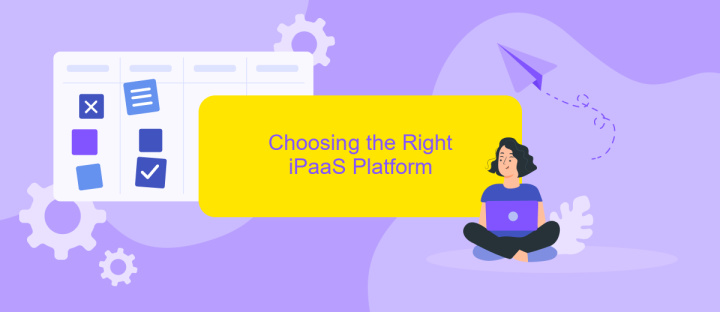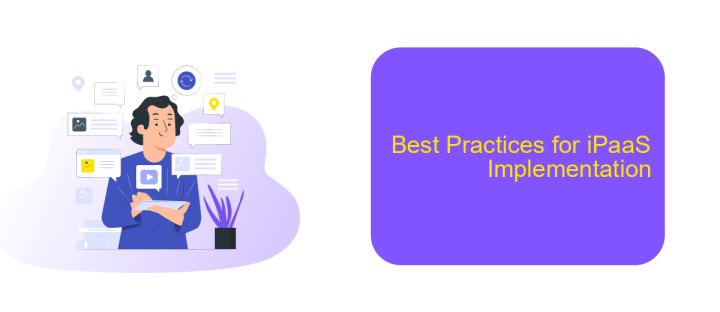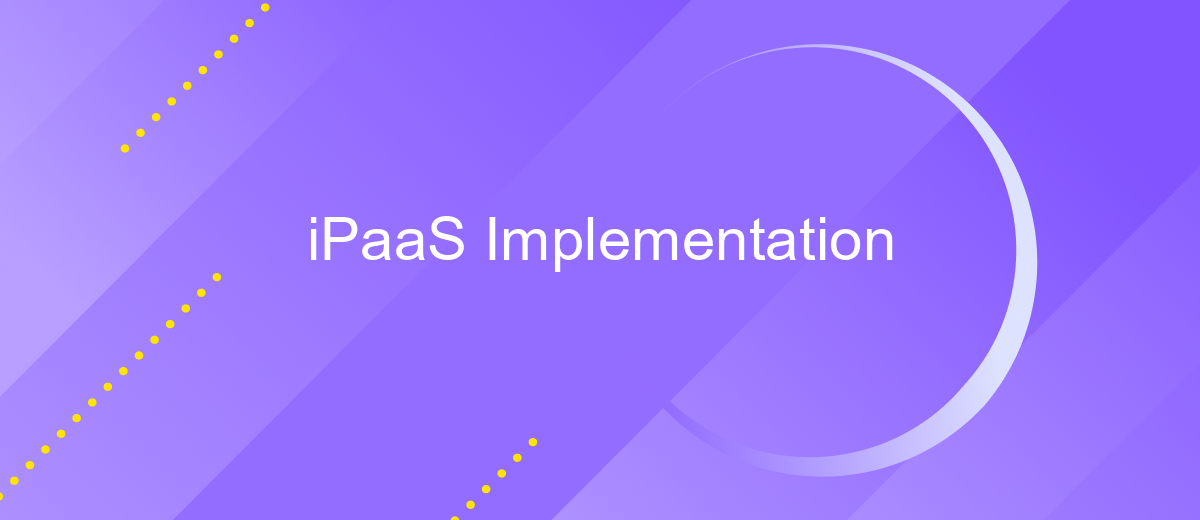iPaaS Implementation
Implementing an Integration Platform as a Service (iPaaS) can revolutionize the way businesses manage their data and applications. By streamlining processes and enhancing connectivity, iPaaS offers a scalable and efficient solution for integrating diverse systems. This article explores the key steps and best practices for successful iPaaS implementation, ensuring seamless data flow and improved operational efficiency for your organization.
Introduction
In today's fast-paced digital landscape, businesses are increasingly turning to Integration Platform as a Service (iPaaS) solutions to streamline their operations and enhance connectivity across diverse systems. iPaaS provides a unified platform that simplifies the integration of various applications, data sources, and services, enabling seamless data flow and improved efficiency.
- Streamlined integration processes
- Enhanced data connectivity
- Improved operational efficiency
- Scalability and flexibility
One notable service in the iPaaS market is ApiX-Drive, which offers robust tools for automating and managing integrations. With ApiX-Drive, businesses can easily connect different applications and automate workflows without extensive coding. This not only reduces the complexity of integration but also allows for real-time data synchronization, ensuring that information is always up-to-date and accessible. As organizations continue to adopt digital transformation strategies, the role of iPaaS solutions like ApiX-Drive becomes increasingly vital in achieving seamless operational harmony.
Benefits and Challenges of iPaaS

Implementing iPaaS (Integration Platform as a Service) offers numerous benefits, including streamlined integration processes, improved data synchronization, and enhanced scalability. By using iPaaS solutions, businesses can easily connect various applications and systems, leading to more efficient workflows and better decision-making. For instance, services like ApiX-Drive facilitate the seamless integration of multiple platforms, reducing the need for manual data entry and minimizing errors. Additionally, iPaaS solutions often come with user-friendly interfaces and pre-built connectors, making it easier for non-technical users to set up and manage integrations.
However, there are also challenges associated with iPaaS implementation. One of the primary concerns is data security, as integrating multiple systems can increase the risk of data breaches. Ensuring compliance with industry standards and regulations is crucial to mitigate these risks. Another challenge is the potential for increased complexity in managing and maintaining the integrations, especially as the number of connected applications grows. Businesses must also consider the costs associated with iPaaS solutions, as subscription fees and additional charges for premium features can add up over time. Despite these challenges, the benefits of iPaaS often outweigh the drawbacks, making it a valuable tool for modern enterprises.
Choosing the Right iPaaS Platform

Choosing the right iPaaS platform is crucial for seamless integration and efficient workflow automation. When evaluating options, consider factors such as ease of use, scalability, and the range of supported applications.
- Ease of Use: The platform should have an intuitive interface and provide robust support documentation to minimize the learning curve.
- Scalability: Ensure the platform can grow with your business needs, accommodating increasing data volumes and complex workflows.
- Supported Applications: Check if the platform supports the apps and services you currently use or plan to use in the future.
- Integration Capabilities: Look for platforms like ApiX-Drive that offer pre-built connectors and customizable integration options to streamline the setup process.
- Security and Compliance: Verify that the platform adheres to industry standards for data protection and compliance.
By carefully considering these factors, you can select an iPaaS platform that not only meets your current needs but also supports future growth and innovation. ApiX-Drive, for example, offers a user-friendly interface and extensive integration capabilities, making it a strong candidate for many businesses.
Best Practices for iPaaS Implementation

Implementing an Integration Platform as a Service (iPaaS) requires careful planning and execution to ensure seamless data flow and system interoperability. Start by defining clear objectives and understanding your business needs, which will guide the selection of the right iPaaS solution. Conduct a thorough assessment of your existing systems to identify integration points and potential challenges.
Choose a flexible and scalable iPaaS solution that can adapt to your evolving business requirements. ApiX-Drive, for example, offers robust integration capabilities that simplify the connection of various applications and services. Ensure that your chosen platform supports the necessary protocols and data formats to facilitate smooth communication between systems.
- Define clear integration goals and requirements.
- Assess existing systems for compatibility and integration points.
- Choose a flexible and scalable iPaaS solution like ApiX-Drive.
- Ensure the platform supports necessary protocols and data formats.
- Regularly monitor and optimize integrations for performance and reliability.
Training your team on the new iPaaS solution is crucial for successful implementation. Provide comprehensive documentation and support to ensure they can effectively manage and troubleshoot integrations. Continuous monitoring and optimization will help maintain the performance and reliability of your integrated systems.
Adoption and Impact Measurement
The adoption of an iPaaS (Integration Platform as a Service) solution involves a strategic approach to ensure seamless integration of various applications and data sources. Organizations must first assess their current integration needs and identify key performance indicators (KPIs) to measure the success of the implementation. Utilizing services like ApiX-Drive can streamline the integration process by providing a user-friendly platform that connects multiple applications without the need for extensive coding. This not only accelerates the adoption phase but also reduces the complexity and time required for setup.
Measuring the impact of iPaaS implementation is crucial for understanding its effectiveness and ROI. Key metrics to consider include the reduction in manual data entry, improvement in data accuracy, and the speed of data transfer between systems. By leveraging ApiX-Drive, organizations can gain real-time insights into these metrics, allowing for continuous optimization of integration processes. Regularly reviewing these metrics ensures that the iPaaS solution continues to meet business objectives and adapts to evolving integration requirements.


FAQ
What is iPaaS?
How does iPaaS improve business processes?
What are the key features to look for in an iPaaS solution?
How can iPaaS help with data security and compliance?
What should I consider when selecting an iPaaS provider?
Time is the most valuable resource for business today. Almost half of it is wasted on routine tasks. Your employees are constantly forced to perform monotonous tasks that are difficult to classify as important and specialized. You can leave everything as it is by hiring additional employees, or you can automate most of the business processes using the ApiX-Drive online connector to get rid of unnecessary time and money expenses once and for all. The choice is yours!

